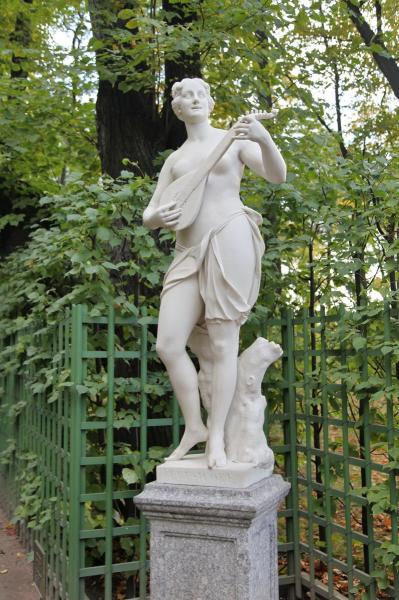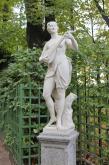Terpsichore
A copy from the original of Guiseppe and Paolo Groppelli. Early 18th century
- Artificial marble. 198 х 65 х 56
- Location in museum The Summer Garden
- Period Late 17th century – the 18th century
- CategoryMythological Subject
- Share
The depiction of the god Apollo accompanied by the Muses marked the beginning of the secular art in Russian culture, became the symbol of prosperity of arts in Russia. Apollo’s companions (the Muses) embodied the creativity in a person. They inspire artists, poets and actors. Each Muse patronised some kind of art and was depicted with appropriate attributes.
Terpsichore (from Greek – dance-liking) is a Muse of dance and sometimes chorus. She was usually depicted holding a lyre in a hand. Terpsichore is in the figurative sense “a ballet-dancer”. We read in Pushkin’s “Eugene Onegin”:
Shall I your chorus hear anew,
Russia’s Terpsichore review
Again in her ethereal dance?
The young woman conducts herself freely and easily, her hair is decorated with three soft feathers. These are the trophies of the Muses that defeated the Sirens in contest in singing. The Muses tore out the Siren’s motley feathers and decorated with them their hair.

